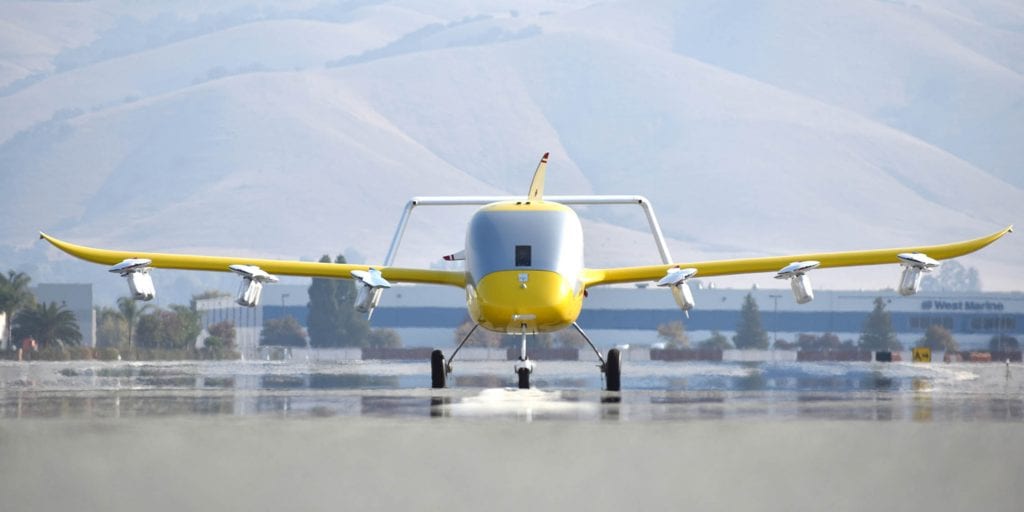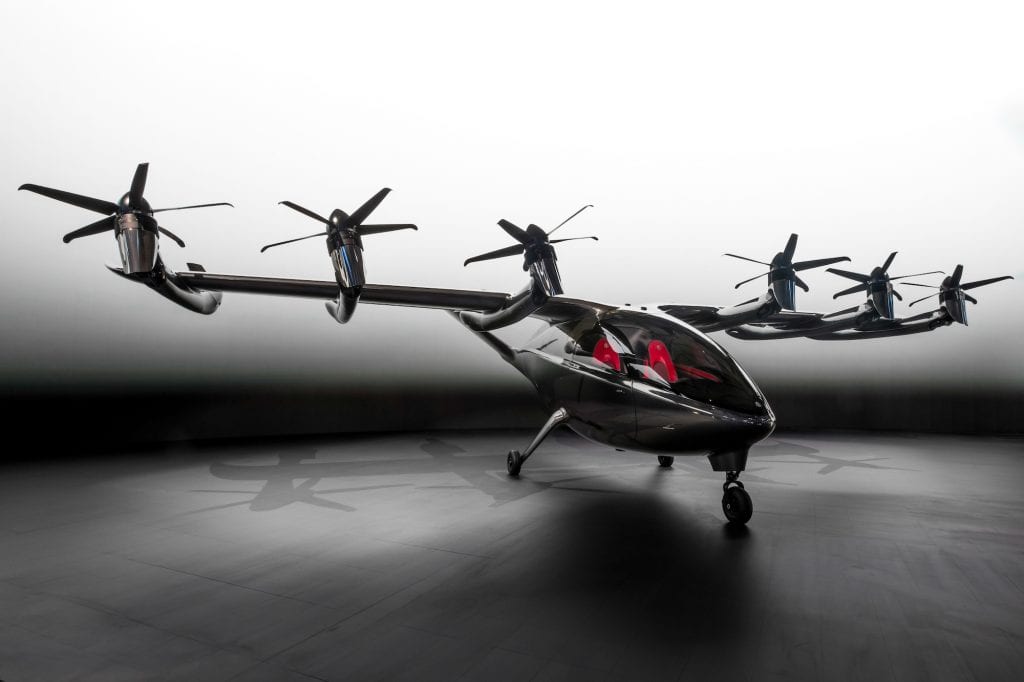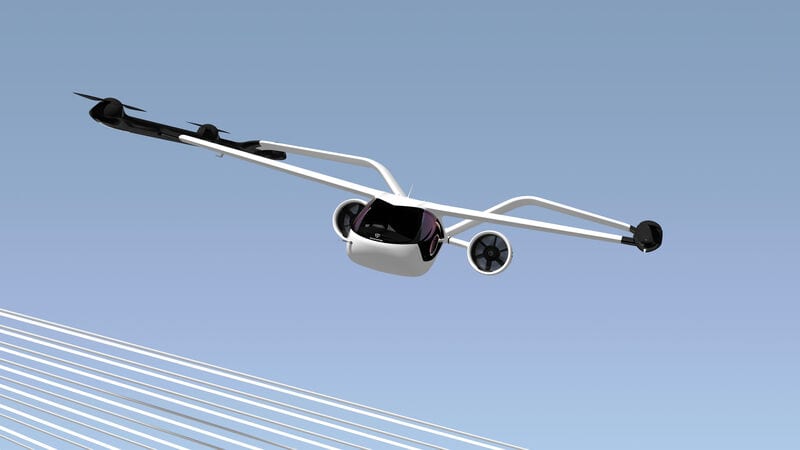Will You Be on the First Air Taxi?


Wisk’s eVTOL aircraft, has been flying since 2017 and has a range of 25 miles with speeds up around 100 miles per hour. (photo courtesy of Wisk)
It’s 2024 and the first air taxi has just received certification from the Federal Aviation Administration (FAA) or the European Union Aviation Safety Agency (EASA) – or both. This new transformative technology is promising decreased travel times, zero emissions, and affordable travel to customers. The only question left to ask is who gets to go first?
While air taxis will provide a bespoke travel option, they incorporate aspects of transport available to commuters today, so its first passengers will most likely be those who utilize those methods of transport now—think people who use helicopters, small private aircraft, and ride-hailing services. According to industry experts and air taxi companies, the first air taxi passengers will be tech-savvy business travelers, tourists or micro-explorers located in dense metro areas.
“I think the very early adopters will be the ones where it’s going to be easy to put the product into place, and where it basically mirrors things we already have, right,” Robin Riedel, a partner at McKinsey & Company who published a recent study on consumers views of advanced air mobility, told AAR. “So that could be flying into airports, basically taking over from helicopter routes for eVTOL routes or where we don’t need brand new ground infrastructure on both ends of the journey, where we don’t need to get people to do things that they haven’t really done the same way that they did before.”
The planned launch cities for many air taxi companies are reflecting these views.

Archer’s demonstrator eVTOL aircraft, Maker, will begin test flights this year. (Archer)
Archer will be concentrating on deploying its electric vertical takeoff and landing (eVTOL) aircraft in dense cities and already has partnerships with Los Angeles and Miami, a company representative told AAR. Archer’s eVTOL uses distributed electric propulsion with 12 electric motors and six independent battery packs, the company announced in the recent debut of its demonstrator aircraft, Maker. The aircraft will have a 60-mile range with speeds up to 150 mph.
“We are redefining transportation for generations to come, leading the fourth transportation revolution,” the representative from Archer said. “We are concentrating on partnering with cities that are in need of a traffic density release effort. The reality is, modern transportation infrastructure cannot support surging urban populations – and cities don’t have adequate space to extend roadways to meet current and future demands. Simply put, cities are overdue for transformation on a global scale.”
Archer describes its first passengers as people looking for fast, safe, and environmentally friendly travel. The company says these passengers will be micro-explorers who are looking to create experiences from their travel.
“We believe in the age of the micro-explorer,” a representative from Archer told Advanced Aviation Report. “Micro-exploration is a new way of life, putting soul-satisfying adventure at your fingertips and creating transformative travel experiences each day —even if you’re just commuting to work. From a hike in the mountains after work to a weekend trip to a peaceful cabin or even a new city, micro-explorers will use Archer to discover and explore their cities at previously unobtainable levels.”

A rendering of the 7-Seater eVTOL jet which shows the 36 ducted fans. (Lilium)
Lilium, a German air taxi manufacturer, has announced launch plans that align with Riedel’s analysis with operational hubs at Munich and Nuremberg airports in Germany. The company also announced plans to launch operations in the U.S. in Florida. Lilium’s 7-Seater Jet is designed for efficient regional air mobility with ranges between 40 and 200 kilometers at speeds up to 300 kph.
Wisk, who is developing an autonomous electric air taxi, is predicting its first passengers will vary across demographics like income and age but will likely lean towards people who already frequently travel. Cora, Wisk’s eVTOL aircraft, has been flying since 2017 and has a range of 25 miles with speeds up around 100 miles per hour. Wisk is currently working on demonstrations with NASA to find solutions to integrate autonomous aircraft into the national airspace.
“Our research shows that there’s high interest across a wide range of consumer groups, with similar interest levels across a range of demographics, from income levels, ethnicities, commute duration, age, etc,” a representative from Wisk told AAR. “However, we’ve found that early adopters — those most interested in the concept of air taxis — skew toward those that are frequent travelers, tech-savvy, and living in metro areas.”
These travelers will use eVTOL aircraft for work travel, commuting, and personal use, according to Wisk.
“We see a variety of potential use cases for air taxi service and validated those assumptions with customer research,” Wisk’s representative said. “The data tells us that the majority of consumers would use an air taxi for work travel, whether out of town for work, around town for work, or commuting to/ from work. It also shows many would also use them for personal use and sheer fun, whether they are meeting friends, traveling to appointments or obligations, or running personal errands.”
Time savings is one of the biggest benefits air taxi companies are advertising to potential customers and studies show that this will be a top motivator for consumers. In the study from Riedel, over 30 percent of consumers across multiple countries cited quicker travel times as a motivator for using advanced air mobility vehicles.
“Imagine a world where you are not constrained by traffic — where you can travel from San Francisco to San Jose in 30 minutes rather than two hours, or from Manhattan to JFK in just ten minutes,” Archer’s representative said. “There are millions of daily commuters that will need this service to go to and from work in an affordable, timely manner.”
Air taxi companies will distinguish their aircraft from already available means of transport like helicopters or private aviation by claiming that their product will be available to a broader audience. However, this will require companies to expand beyond the initial base of passengers who may already be eager to jump into an air taxi.
“One of our fundamental beliefs is that air taxi services should be accessible to all and our goal is to ensure that anyone that wants to experience everyday flight has the ability to do so,” Wisk’s representative said. “In addition to safety, saving riders time and reliability are a few of the benefits that will drive and expand adoption.”
Air taxi companies’ strategies for introducing their products to the wider public revolve around education through partnerships with public and private stakeholders such as local governments.
“In the years leading up to our commercial launch, we will work with our partnered cities to help educate city dwellers on the benefits of an eVTOL system, how they work, and why they are a superior travel option both inconvenience and safety,” Archer’s representative said.

Volocopter’s VoloConnect will be one of two eVTOLs the company plans to release. (Volocopter)
Some companies have already started exposing the public to their aircraft. Volocopter, the German company creating an urban air mobility ecosystem, is showcasing its aircraft at public events so people can see them for themselves. Volocopter is developing two air taxis: VoloCity for inner-city missions and VoloConnect for intra-city missions.
“Public acceptance is key when introducing new technologies,” a representative from Volocopter told AAR. “This is why Volocopter has put a focus on educating the public about Urban Air Mobility by giving as many opportunities as possible to the public to witness air taxis and urban air mobility. Most prominent examples are our flights in Singapore, Stuttgart, Helsinki, and recently Paris.”
Air taxis will also have to be affordable to enable the wide public adoption that companies are predicting. Archer is estimating its service will cost around $3.30 per seat-mile at launch and decrease as more aircraft enter the market.
“Archer’s business model is similar to Uber, Lyft, and other companies looking to make mass transportation more accessible,” Archer’s representative said. “We plan to launch with a pricing structure on par with that of an UberX.”
Consumers’ most important concern about these vehicles is safety. According to Riedel’s study published by McKinsey & Company, 60 percent of respondents cited safety as a top concern about advanced air mobility vehicles.
Companies are prepared to answer these concerns by citing their vehicle’s redundant systems and cooperation with respected regulators.
“Regarding safety education is a key topic to help people understand the steps we take to ensure our aircraft is safe – from years of testing experience, to most importantly the very high entry barrier of being certified by the EASA,” Volocopter’s representative said. “There will be no air taxi player flying in cities that has not proven their safety level to the regulator. That being said, we are also certifying against the highest safety standards in aviation with EASAs SC-VTOL category enhanced aiming at 10^-9 safety levels: one fatal accident in one billion flight hours.”
However, it will probably be hard to have complete clarity on the public perception of this technology before it is actually in use, Riedel said.
“I think the challenge is, we just don’t know, right,” Riedel said. “I mean people on both sides of the argument are like it’s going to be really hard to convince people to go but people can also say well we used to have operators in elevators, right? People were scared of elevators…To be honest, I don’t know. I think it will come down to are there any big public-facing accidents early on that will get people worried.”
The post Will You Be on the First Air Taxi? appeared first on Aviation Today.
Check FastApn access for commercial satcoms at Fastapn
Flytlink – Avionics, Satcom’s and IFE Consultants






